adaptive reuse case study
THE DEPTFORD PROJECT
location: Deptford, London
former function: Jubilee Line commuter train carriage
built: 1960s
previous architect: unknown
new function: café and bistro
remodeled: 2008
architects: Studio Myerscough
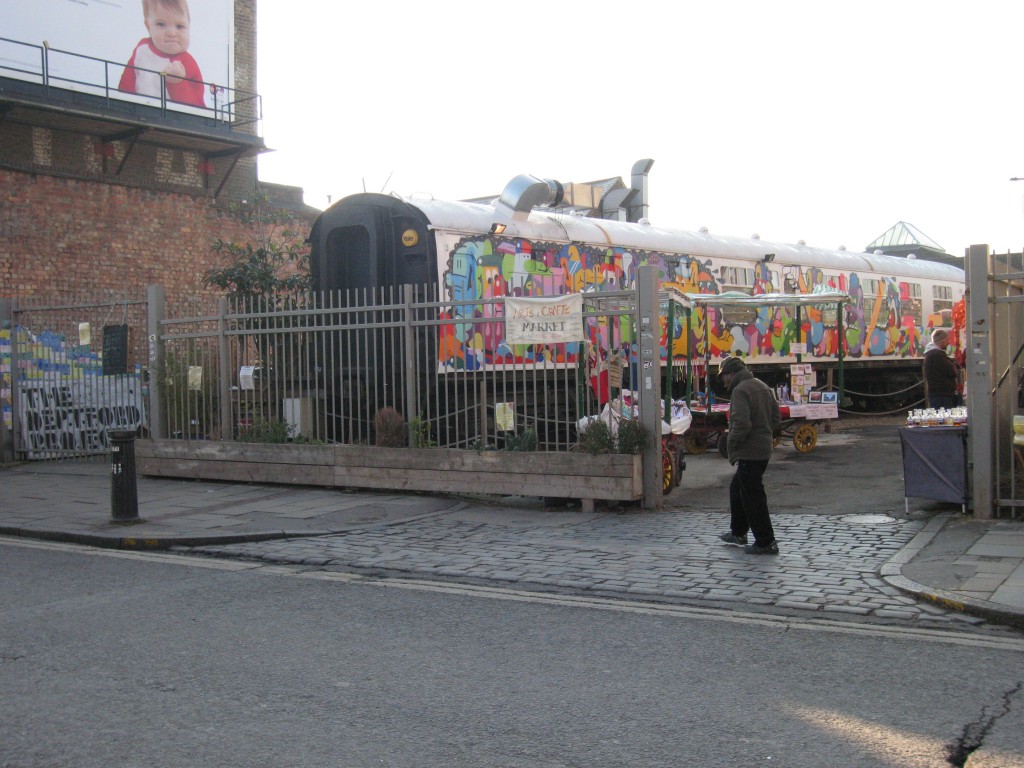 |
| The Deptford Project, a delightful coffee shop in a redundant London Underground carriage. Photo ©Heather Shimmin |
On 14 February 2008, after a very slow journey from Essex, a 35 tonne, 57 passenger, decommissioned 1960s commuter train carriage arrived at its new home on Deptford High Street in the old railway yard of London’s first suburban train station: Deptford. The carriage is 60 feet long, 10 feet wide, and 11 feet high and sits on tracks on an old Victorian carriage ramp built in 1836. South East Trains, the same company who supplied the train carriages for the Jubilee Line in 1836, donated the train carriage to the project.
The project is a collaboration between the developer, The Cathedral Group, and Studio Raw, an organisation that focuses on community design and regeneration projects. The carriage has been converted into a café and bistro as part of a larger regeneration scheme for the borough called the Thames Gateway Project, an ambitious effort to revive various areas along the Thames. As part of the scheme, new buildings will be constructed in the area, including a mixed-use commercial and residential high rise designed by Richard Rogers. The carriage is hoping to act as a catalyst in bringing art, film, music, and creativity to Deptford.
The carriage sits on the Victorian carriage ramp and rail yard, an area of about ⅓ of an acre, between a block of three-storey Georgian terraces on Deptford High Street. Deptford was heavily bombed during World War II. Today, it is one of the poorest boroughs of London and suffers from high crime rates, insufficient housing, and many other serious problems.
Throughout the year, various events designed to involve the community take place at the Deptford Project. Last year’s events included a Barn Dance, Silent Movie Night, and art exhibitions. Since the carriage was installed four years ago, other cafés, bistros, and independent businesses have opened their doors on the High Street, where before there were only pound shops and second hand stores.
analysis
Deptford is one of a handful of boroughs chosen for the Thames Gateway regeneration project. Studio Raw saw this an opportunity to work on a project that could rejuvenate a community with lots of potential. Wanting to reconnect with Deptford’s history as the location of the first suburban railway station in London, choosing to convert an old train carriage into a café was not an accident. The South East Train Company generously donated a commuter carriage from the 1960s to be used in the project. The carriage rests on tracks at a 47º angle to the High Street on an east/west axis slightly hidden behind a seven-foot high iron gate.
The interior of the carriage is only 660 ft2, a small space to accommodate the needs of a corner bistro. The carriage was gutted and serves as a kitchen and dining area. A wooden deck extends from the carriage door to the south, providing additional seating. A separate, 6×6 shed has been put on the property as the loo. The interior is a shrine to Elvis Presley, the idol of one of the project’s collaborators. The entrance to the café is about 5 feet off the ground, surmounted by a set of stairs to the deck or via a ramp that wraps around the carriage on the other side for disabled access.
To the north of the carriage is a small open space used as a car park, farmers market, and events area. The west side of the plot is lined with trees, providing a secluded oasis in an otherwise dreary area.
intervention
The structure of the train carriage was in relatively good condition when it arrived from Essex. Everything on the interior was taken out except the horizontal handrails in the ceiling and the power outlets. The shell, the wheels, and everything on the exterior were kept. The side entry door, front and rear doors, and all fenestration were left intact. The shell was painted white inside and out. All of the services are hidden under the carriage. The electrical system had to be upgraded. A kitchen exhaust fan has been added to the roof. A serving hatch has been cut out on the south side. A loo was added in a separate structure to the south of the carriage.
tactics
Inside still feels very much like a train carriage. The interior still reads as one, continuous horizontal space; there is no physical barrier separating the kitchen and dining area, however there are elements of design that separate the areas. All of the carriage windows have been kept in the dining area whilst the ones in the kitchen area have been covered. The refrigerated L-shaped counter is a clear divider of the two spaces. The dining area is flooded with light from the carriage windows on both sides.
Recycling and the reuse of materials is a theme throughout the project. The dining tables are made of old school laboratory desks painted with an industrial finish. The stools are handmade from reclaimed materials and have sayings painted on them related to sitting, such as “sitting duck,” “I saved this for you,” and “the best seat in the house.” Six lamps hang from the ceiling the length of the dining area. The lampshades are made of recycled surgical tubes in cheery red, yellow, pink and green. The outdoor deck is made from reclaimed wood. Potted plants and flowers are scattered about the deck, bringing life and cheeriness to the area.
The white exterior of the carriage has undergone several design iterations. The current skin is a brightly colored conglomeration of stenciled artwork and song lyrics relating to trains: this train is bound for glory; people all over the world join hands love train love train; I hear a train a comin’ it’s rolling down the bend…
The carriage was made for people, functioning as a vehicle through which people traveled from point A to point B. This carriage is still for people; only it is not the mode of transport but the destination.
A group of people enjoying the deck that extends east from the train carriage. Photo ©Heather Shimmin
The kitchen and service counter inside the carriage. Photo ©Heather Shimmin
Interior of the carriage. Lively lamp shades made from reclaimed surgical tubing. Photo ©Heather Shimmin
Stools inside the cafe all have sitting-relating sayings painted on them. Photo ©Heather Shimmin
Enjoying a cup of tea inside the Deptford Project Café, London. Photo ©Heather Shimmin
case study
VILLAGE UNDERGROUND
location: Shoreditch, London
former function: Jubilee Line commuter train carriage
built: 1960s
previous architect: unknown
new function: artist studio and workspace
remodeled: 2007
architects: Auro Foxcroft & Nicolas Laurent
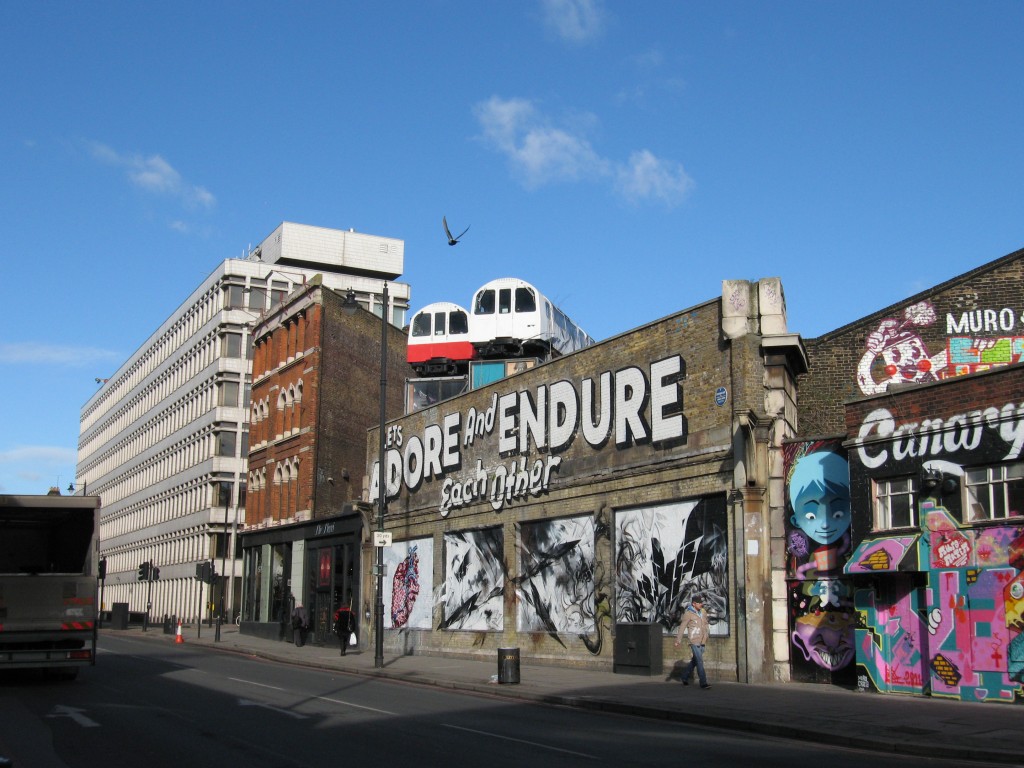 |
| Village Underground, affordable office space in Central London available to artists. Photo ©Heather Shimmin |
The carriages were purchased from a scrap yard in Essex (£100 for 6 carriages) and transported to Hampstead (for £30,000) where they were cleaned, patched up, painted and brought to Shoreditch were they were hoisted up onto an abandoned train viaduct in April 2007 (for another £8,000). Two of the carriages rest on shipping containers that provide additional workspace for artists. One of the train cars is used as Village Underground’s office. The carriages are accessible via an exterior metal winding staircase.
To the west, Village Underground has taken over an abandoned Victorian warehouse where it hosts concerts, events, theatre, art exhibitions, and other live performances. The Village Underground is currently self-sufficient and does not depend on grants in order to operate. The events space and the artist space are two separate operations within the Village Underground.
analysis
The Village Underground is not underground at all. The former Jubilee Line train carriages are two storeys above ground on an abandoned train viaduct between Great Eastern Street and Holywell Lane in Shoreditch, East London. Foxcroft had the inspiration while riding a train home to London from the Continent of using a train carriage for studio space. He rang London Underground and rescued six carriages from being scrapped. Foxcroft decided to leave the graffiti on the carriages, feeling that it added to the spirit of the project.
Shoreditch has gone through many phases like most London boroughs. It was a posh place to live in the 16th and 17th centuries and then became a prostitute-infested slum in the mid-1800s. In the 1990s, Shoreditch saw an influx of artists move in because of the cheap rent, and, as is so often the case, has experienced a cultural Renaissance and is now a thriving art community.
The old Shoredtich viaduct used to cross over Great Eastern Street and Holywell Lane but both overpasses have been taken down, leaving the Village Underground on a small “island” overlooking the self-seeded green rooftop across the way.
The carriages are lined up side by side, about 6 feet apart, and are on a north/south axis. The carriages provide inexpensive workspace for young artists in London. The open floor plan encourages collaboration amongst the tenants; the views provide inspiration and the windows on both sides of the carriage flood the interior with natural light. The pneumatic doors have been reinstated, keeping the spirit of the former use of the carriages alive. Considering how far up these carriages are, the artists working in them really must mind the gap when they step out of their office.
intervention
The carriages were gutted in order to provide the maximum amount of usable space. In the carriage that functions as Village Underground’s office, the driver’s seat was kept. It was proposed that the driver’s box be turned into the loo, however, directly below is a thick, metal plate that made installing the necessary plumbing impossible.
tactics
The interiors are open plan to utilize the most of the space and to encourage a feeling of community and collaboration amongst the artists. The desks are lined up on the east side of the carriage to maximize the natural light coming through and to facilitate movement within the space.
The carriages were painted with organic paints and rewired for electricity. Only one carriage has water. They rest on reclaimed railroad ties. Solar panels amongst the grass growing on the roof to the east supply all of the electricity for the 6 carriages and 2 shipping containers.
Two train carriages on the roof in Shoreditch, London. Photo ©Heather Shimmin
The Village Underground’s office space in one of the six train carriages on the roof in Shoreditch, London. Photo ©Heather Shimmin
Graffiti was left on the train carriages to add character and interest to the project. Photo ©Heather Shimmin
View from one of the train carriages. The remains of the old Shoreditch train overpass, now filled with native grasses and trees. Photo ©Heather Shimmin
View of the carriages from street level. Photo ©Heather Shimmin
ANALYSIS OF THE DEPTFORD PROJECT & VILLAGE UNDERGROUND
The carriages for both of these projects were disused and laying in a junkyard in Essex. The carriages are all from the 1960s and were acquired for a relatively low cost. Both were gutted, yet retained the essence of what their original purpose and function were. Reminders of what the structures used to be are ever present due to the long, familiar shape of the carriage. The interior of a carriage is something Londoners see everyday. The surprise comes when one steps into a train car and sees tables, chairs, computers, an espresso machine, or a sandwich that they would actually want to eat. These new conversions are pleasant and inviting, not words usually associated with the tube.
The major differences between the two conversions, aside from their purpose and the location, are the different needs for each project. The Deptford project required much more power, water, plumbing, and services for a café whereas the Village Underground really only needed power. The Deptford project needed to accommodate 25+ people at time, whereas the Village Underground, just a handful. Bringing electricity to the roof of a building brought unique challenges to the Village Underground, solved by the installation of PV panels.
As a business model, both projects are struggling (artists are not good and paying their rent and many shots of espresso need to sold in order to make rent). Both have turned to hosting events as a way to supplement their incomes.
For someone who lives in Central London, the Village Underground is much easier to get to, just a ten minute walk from Liverpool Street Underground Station. Deptford, on the other hand, is a two-hour journey, with transfers to the Overground, and a 15-minute walk.
Carriages were meant to serve a community by helping people get to where they need to go. It is a public service, albeit one that the customers pay for, but a service nonetheless. The Deptford Project and Village Underground are continuing with the spirit of community by using these carriages to better the area in which they are now being reused. Their purposes haven’t changed. They are just serving the community by being stationary, not mobile. Both are destinations, not means of arrival.
BOOKS ON ADAPTIVE REUSE
 |
 |
 |
 |
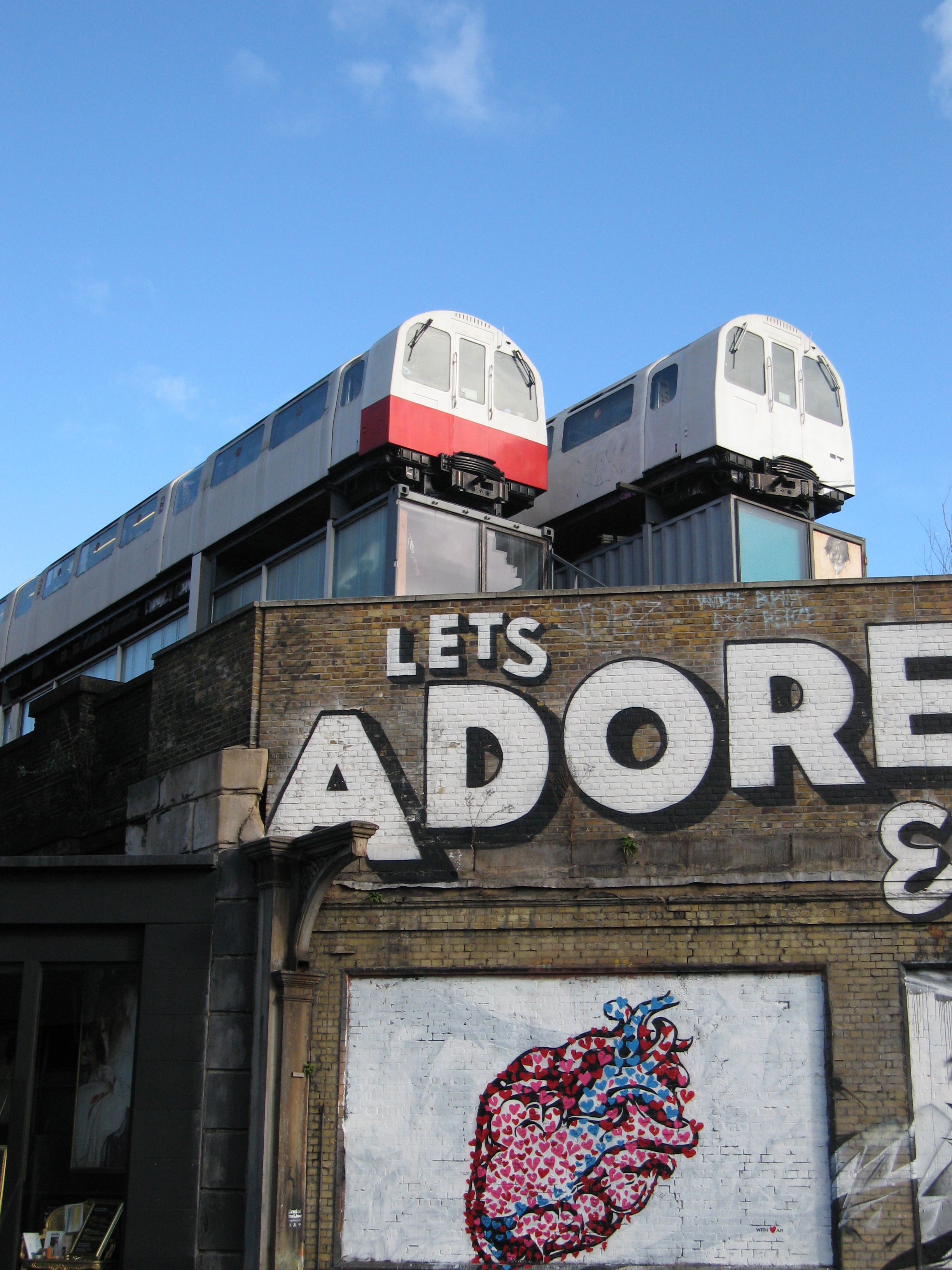
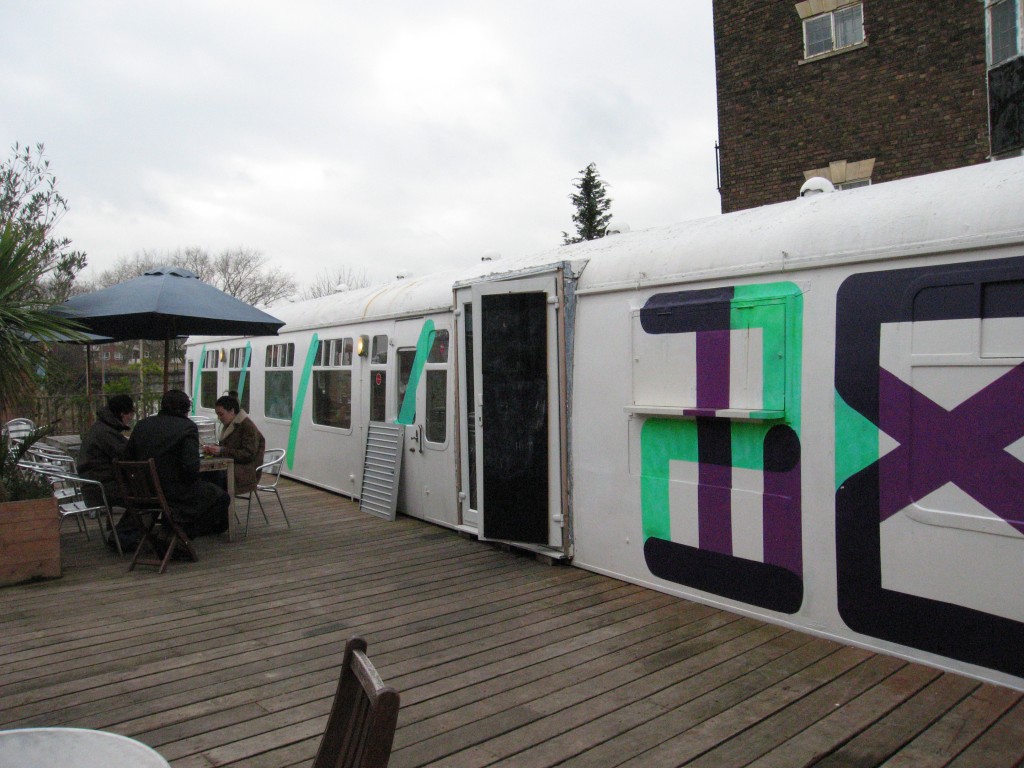
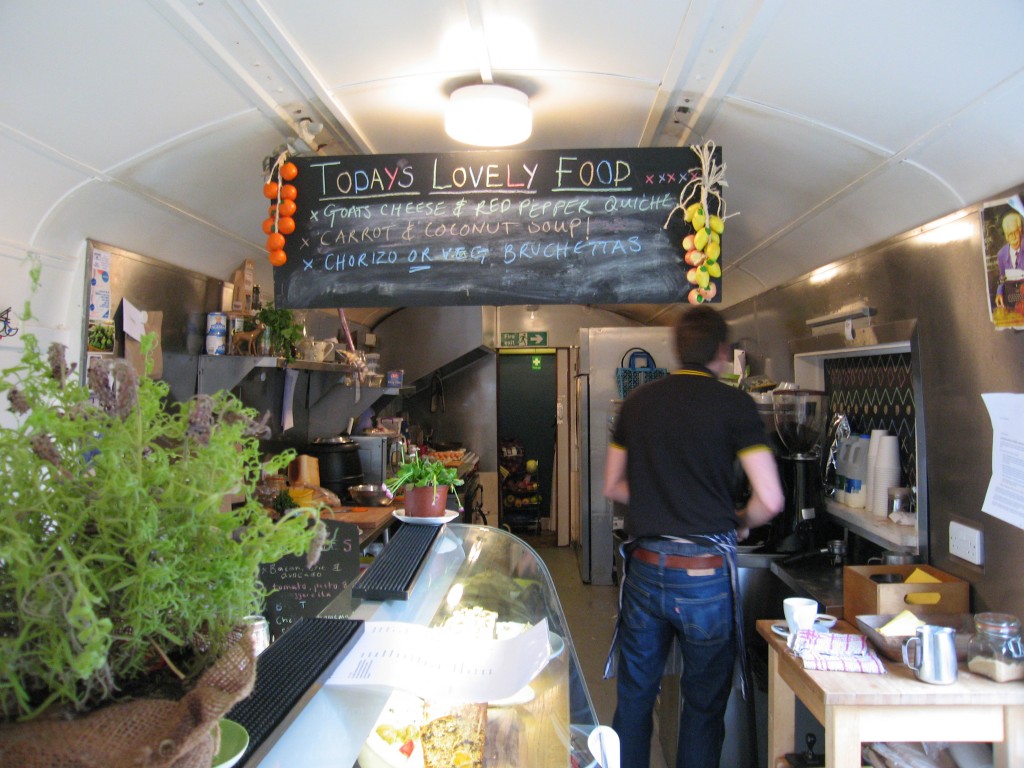
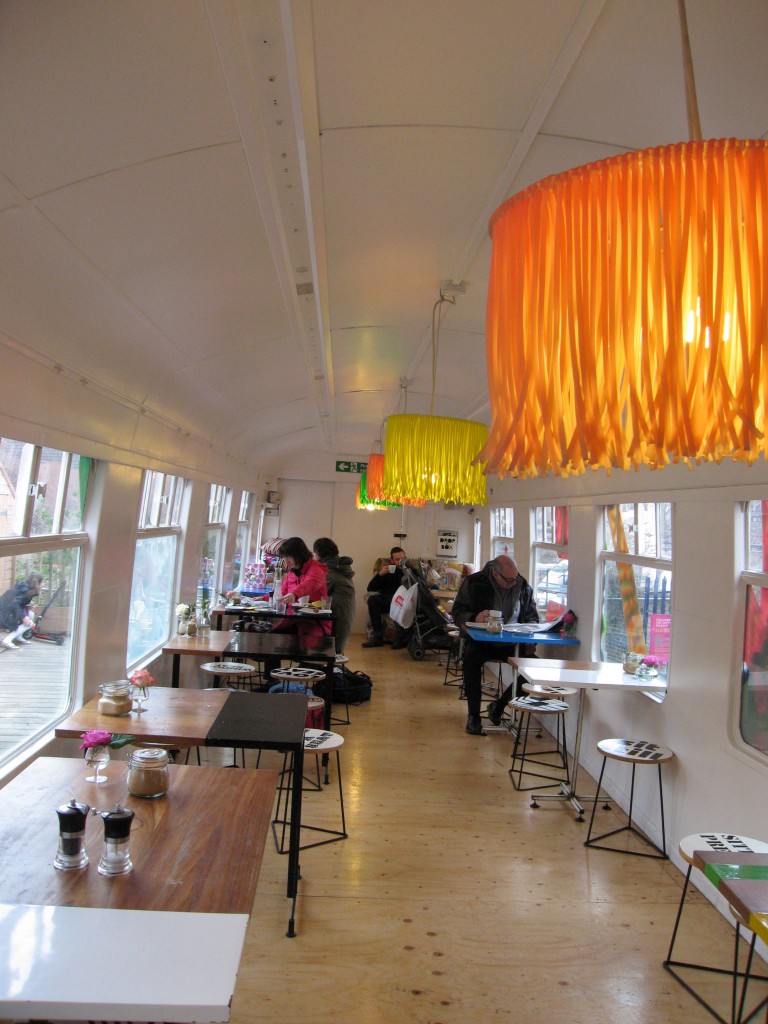
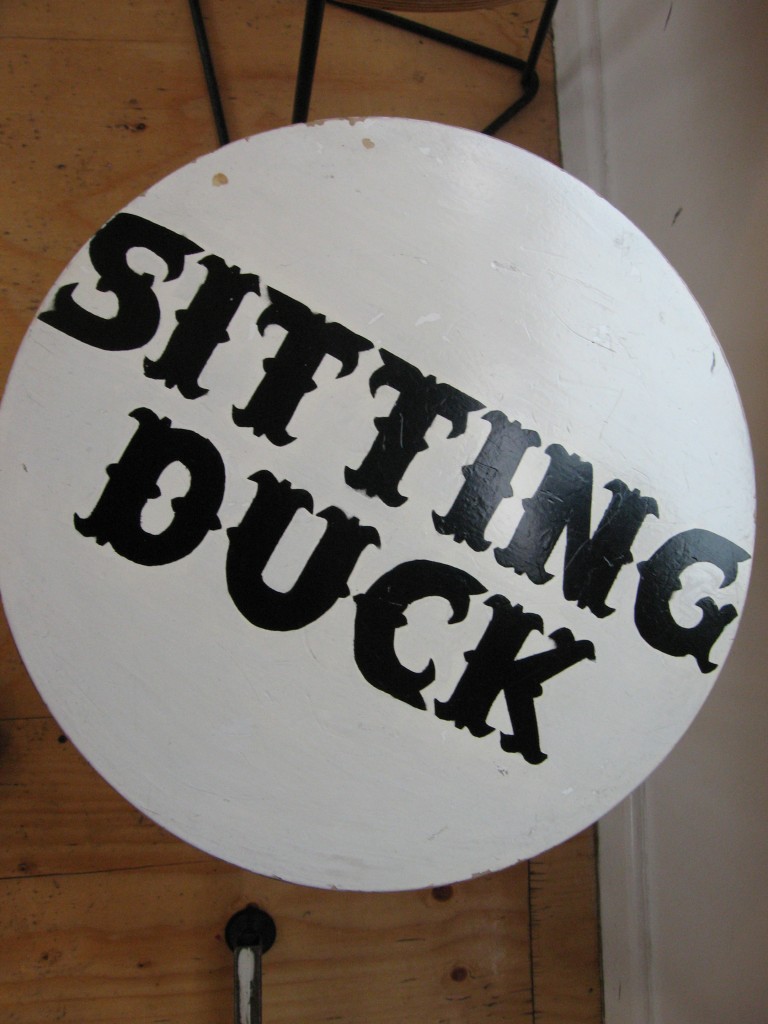
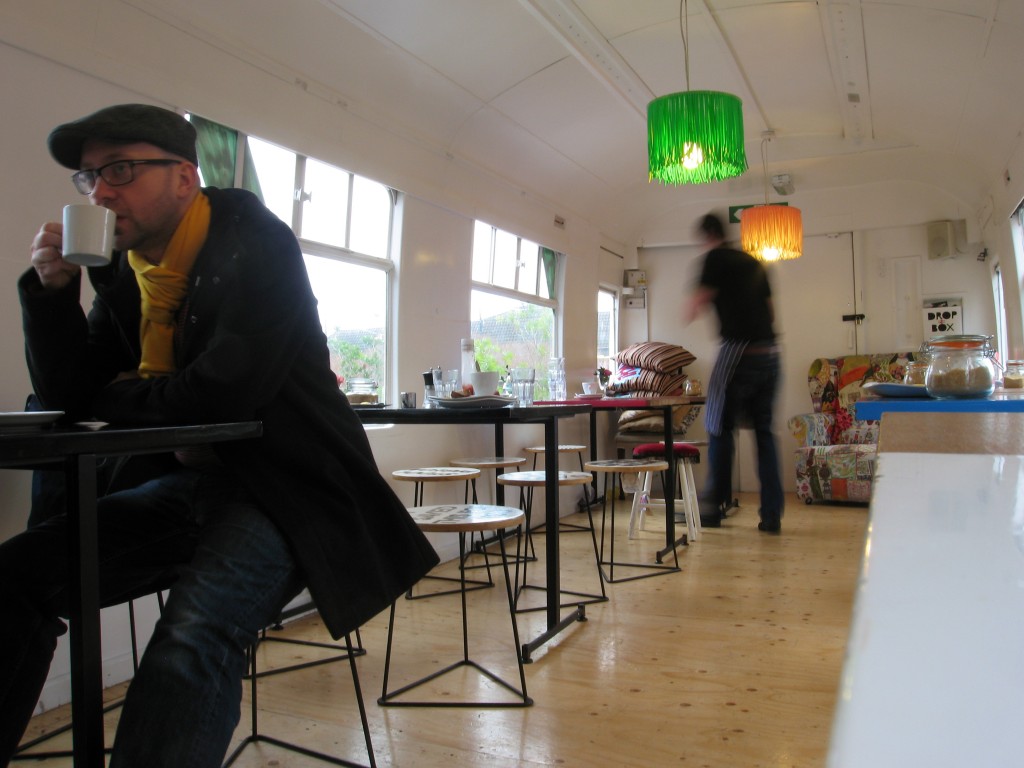
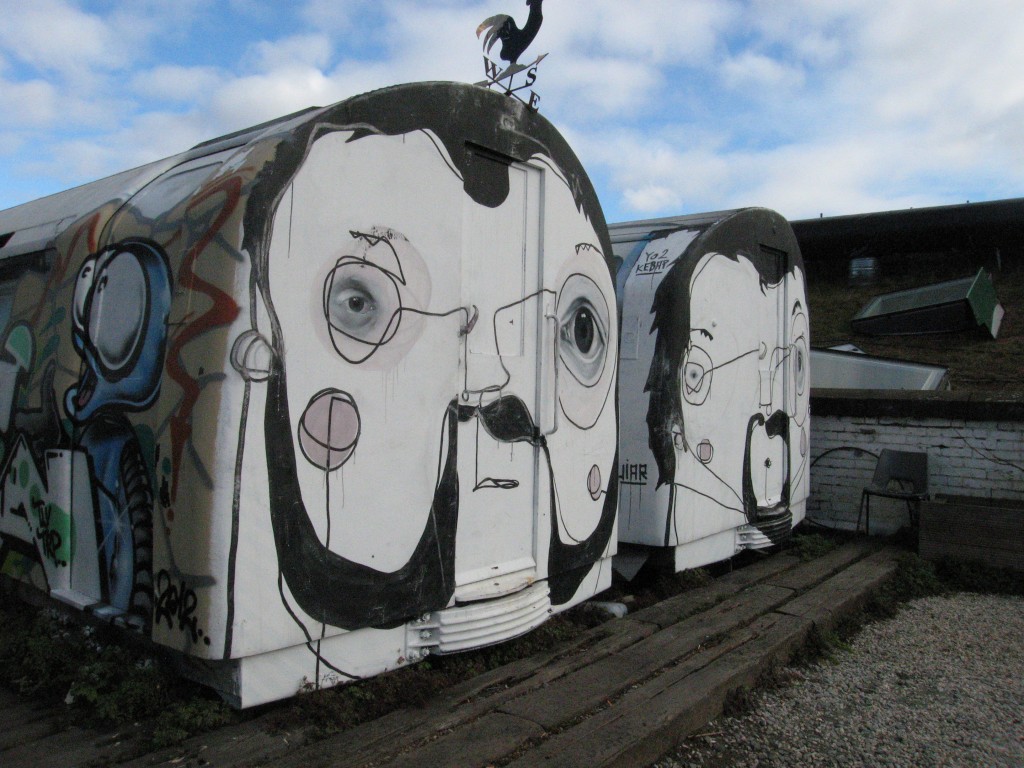
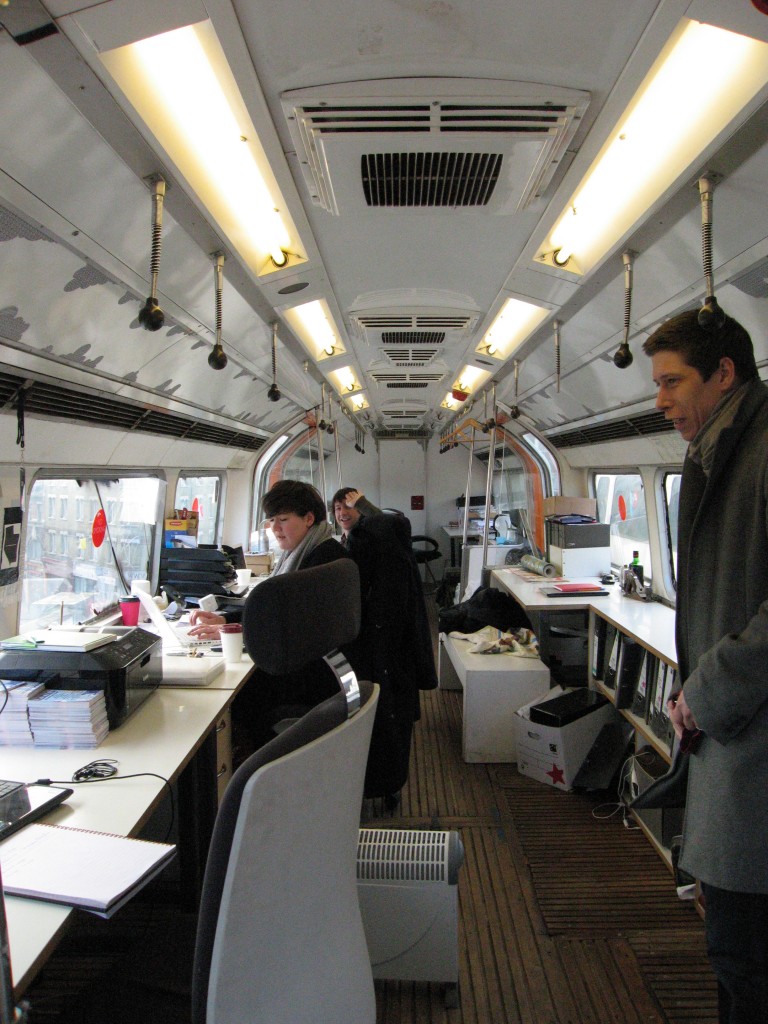
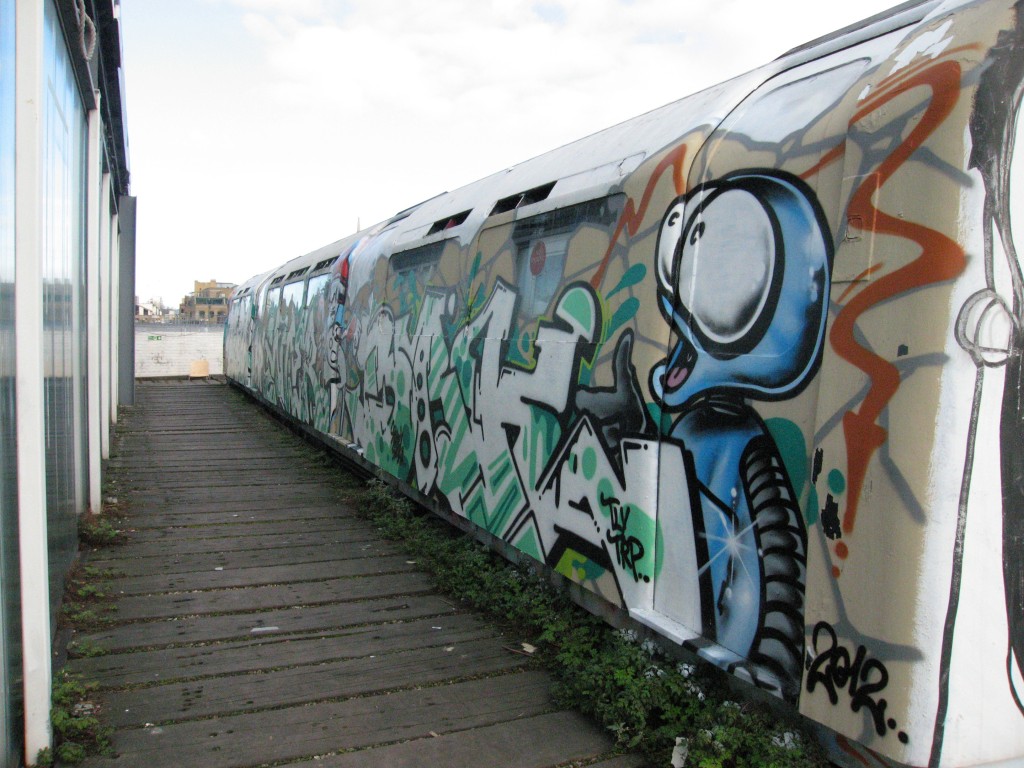
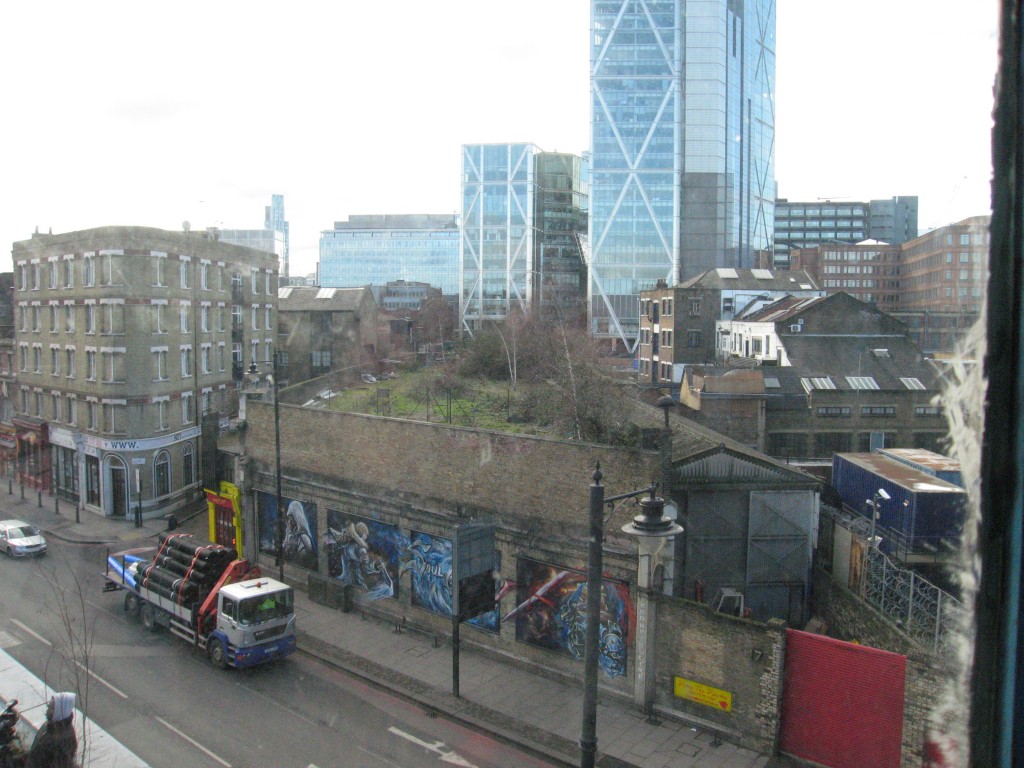
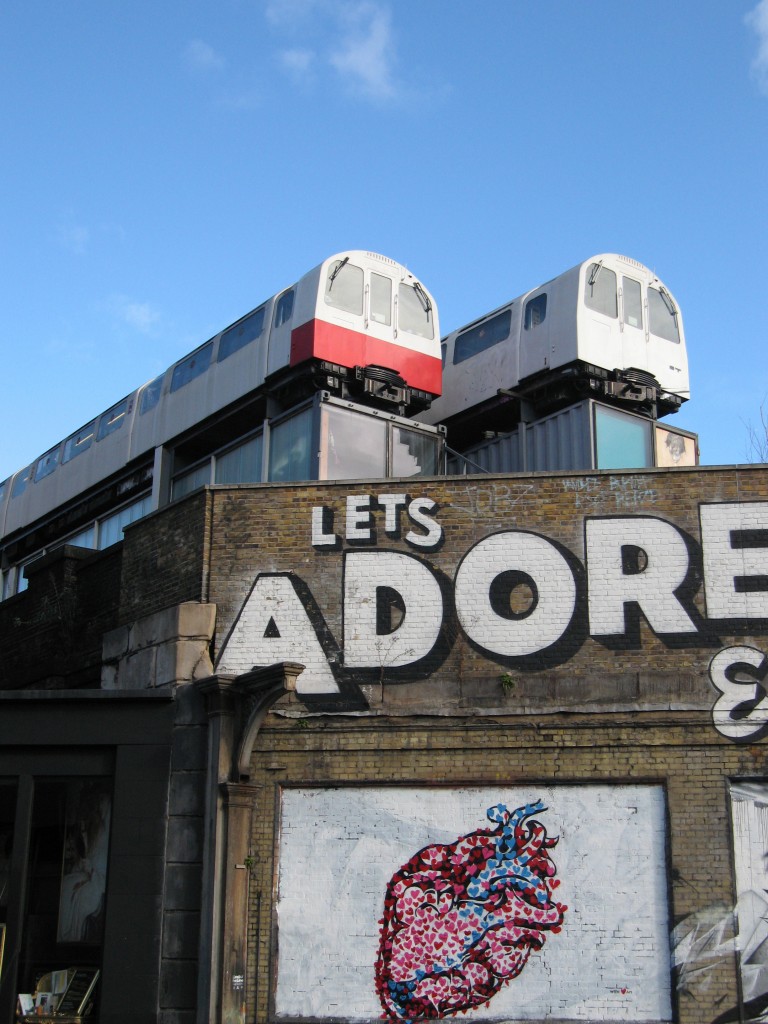
I would like to buy a shprt rail carriage for an art studio. where can I buy one?
These were bought through the London Underground. They were retired carriages destined for the scrap yard. If you’re in New York, I suggest the MTA. Which ever company manages your subway system would be the best place to start your search.
Hi,
I have been trying to get my hands on some old railway carriages, same as these and seem to be going around in circles. Do you have any contact details for the person who to contact at the London Underground?
Any information would be greatly appreciated. Thanks
The only contact I have is the owner of the Village Underground. http://www.villageunderground.co.uk/about He made it seem like he just rang the Underground’s carriage graveyard and struck a deal. Sorry I can’t be of more help.
Hi iam into london underground where can i find the ole jubilee line 1983 tube stock and how to find it what station
Simply wish to say your article is as astounding.
The clearness in your post is simply excellent and i can assume you’re
an expert on this subject. Well with your permission let
me to grab your feed to keep up to date with forthcoming post.
Thanks a million and please continue the rewarding work.
Thank you! It’s a topic that I love.
Don’t know too much about that, but I did find this great article that you can use as a jumping off point: